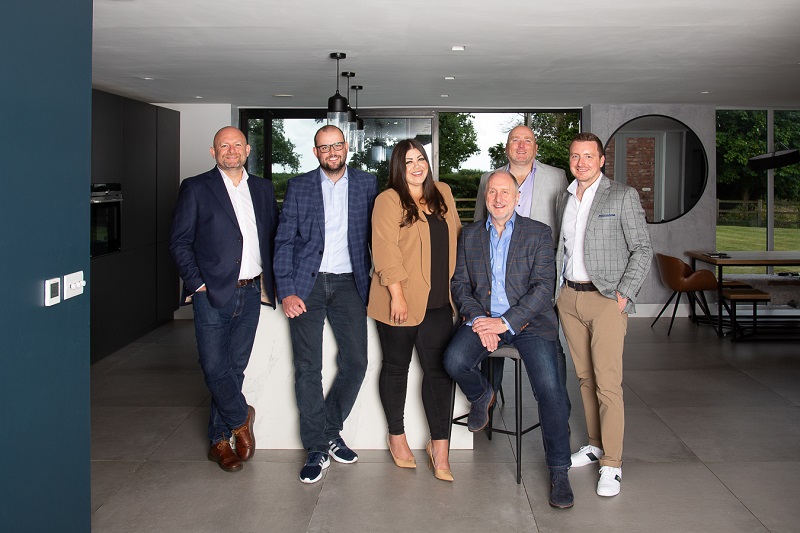Remote working unlocked access to work for many marginalised social groups, seemingly putting the power back in women’s hands. But in reality, the progress women were making in business has been harshly reversed by the pandemic. The Office for National Statistics reported that in the UK, there were 117,000 fewer women employed from October to December 2020 than in the same period in the previous year.
Many women who weren’t furloughed opted to cut back on their hours and aspirations, taking on more unpaid childcare responsibilities than men. 61.5% of mothers of children under age 12 say they took on the majority or entirety of the extra care work, as opposed to 22.4% of fathers.
The pink pandemic
Sectors that account for a relatively large share of female employees, like hospitality, retail, travel, education, and tourism, were hit hard with job losses, reducing women’s capital power in the global economy.
Referred to as the ‘pink pandemic’, this crisis has long-term impacted women’s wealth, leadership and societal standing. PwC also sees massive economic benefits to increasing the number of women in work, estimating the UK could gain £48bn per annum, equating to 840,000 jobs. This calls for an industry-wide effort of organisations, women, and their allies to champion strategies to elevate women’s accessibility to the world of work.
Without direct action from governments, businesses and society, more women will leave the workforce permanently, fuelling the pink pandemic – impacting progress towards gender equality in work over the long term and inhibiting economic growth.
Strategies for organisations to support women
Actioning change at an organisational level first means understanding how businesses can break down bias and the barriers that exist to make work genuinely flexible for women’s lifestyles. Some suggestions include the following:
- Establishing engagement programmes: Employers must invest in developing diversity, equity, and inclusion strategies. This will help create inclusive cultures and engagement efforts for women at all stages of their careers.
- Applying conscious empowerment: To help women advance in the workplace, organisational leaders must use conscious empowerment, assessing who has access to growth, promotions, and leadership development. This will ensure that existing power structures facilitate rather than prevent diversity and make positive efforts to hire, promote, train, and support women in the workplace.
- Extreme listening forums: Listening has always been an underrated leadership attribute enabling more meaningful communication and coaching. Some organisations are now launching listening forums and surveys to understand women’s challenges better.
- Proactively embracing development programmes: Through strategic leadership development and sponsorship programmes, organisations can provide access, exposure, coaching, mentorship, and active career enablement. Examples of training and recruitment vehicles include a ‘re-boarding’ programme to support women returning to work and adult internship opportunities.
- Designing flexible and supportive working environments: HR and learning functions of organisations can be instrumental in creating activities designed to uplift women. Reviewing employee benefits and investing in wellness programmes, maternity leave policies, flexible schedules, and childcare/carer support is critical.
Helping women to regain power and influence
In the modern digital age, it’s incredibly more accessible for women to use technology to connect with the community, seek learning and development opportunities, and create strategies to accelerate their careers. There are three key areas:
- Building the right support system: Building a solid network of allies, whether mentors, sponsors, friends, and family, can help a woman succeed whilst safeguarding her emotional wellbeing. At those classic points when women leave the workforce, there’s a greater need to maintain a close network that provides them with exposure, visibility, and sponsorship. Using technology, women can leverage global virtual live access to creative thinkers, thought leaders, and entrepreneurs who can motivate them to succeed.
- Nurturing in-demand skills: Skills — especially new digital skills — are a game-changer for accessing career opportunities as more organisations embrace digital transformation. This means looking beyond traditional training for new networks, expert insights, and micro-learning.
- Fostering non-work leadership skills: Engaging in non-work leadership can be invaluable. For instance, volunteering to join a school’s board of governors is a great way to build leadership skills that can be transferred to the work environment whilst benefiting the community.
Empowerment through advocacy — strategies for allies
Allies can play an influential role in empowering women for a positive culture of change by building their awareness of implicit and unconscious bias. Through continual assessment of the diversity of their network, workplace team, hiring, promotion, or succession plans, they can act as a mentor and listen to women’s stories. This ‘intentional allyship’ can see allies requesting feedback more than using their voice.
In actively speaking up to influence others against negative and misunderstood micro-behaviours, allies — both men and women — can support women at all stages in their careers. This could be in the office, via social media, or on a website or other portal to amplify the voices of others. Sponsoring and mentoring women’s careers is vital, as well as stamping out hierarchical thinking.
By focusing on intentional enablement, allies help break down barriers, design new working approaches, and help advocate the career journeys women desire. While anyone can be an ally, it requires commitment for meaningful change.
Breaking down bias in thought and action
The ripple effect of the pink pandemic on women has wiped out years of women’s progress in terms of leadership development and financial security. The solution is for women, their allies, organisations, and governments to unite to recognise the current challenges and drive lasting change for women, teams, organisations, and economies.
Business leaders, department heads and hiring managers must listen to women and design roles for a future of work that accommodates women’s needs, from entry-level to the boardroom.
By Agata Nowakowska, AVP EMEA,Skillsoft.









